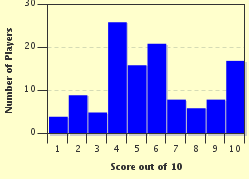Quiz Answer Key and Fun Facts
1. Æthelred II's infamous nickname is the Unready. This comes from a translation of the Anglo-Saxon word 'unræd.' However, it does not actually mean unready in today's sense. What does it mean?
2. Edward III died in 1377, and Richard II became king at the age of ten. Richard's father had been the heir to the throne until he had predeceased Edward III. Who was Richard's father?
3. There have been many sons of kings, heirs to the throne, who have predeceased their fathers. The death of which of the following allowed Henry II to become king?
4. All four of these kings were deposed, or forced to abdicate, and all of them were allegedly murdered. Which of them the last Lancastrian king?
5. Harthacnut died in 1042. His successor was the Edward who reigned from 1042 until 1066. What was this Edward known as?
6. Giving kings and queens nicknames has always been popular throughout history. But which of the following nicknames belonged to Henry I?
7. The Stuarts reigned over England from 1603 until 1649. After the Interregnum, the House of Stuart was restored, and ruled once more, from 1660-1714. However, many of these monarchs had problematic reigns. But which short, stammering monarch managed to get himself executed?
8. Edward I Longshanks towered above his contemporaries, being 6 ft 2 in (1.88m). However, he was not the tallest. Who was taller, at 6 ft 4 in (1.93m)?
9. In 1707, the Acts of Union united the Kingdoms of Scotland and England. Who was queen at this time, thus the first monarch of Great Britain?
10. Who died in the Jerusalem Chamber in the house of the Abbot of Westminster after collapsing during prayer?
Source: Author
ibebored
This quiz was reviewed by FunTrivia editor
bloomsby before going online.
Any errors found in FunTrivia content are routinely corrected through our feedback system.


